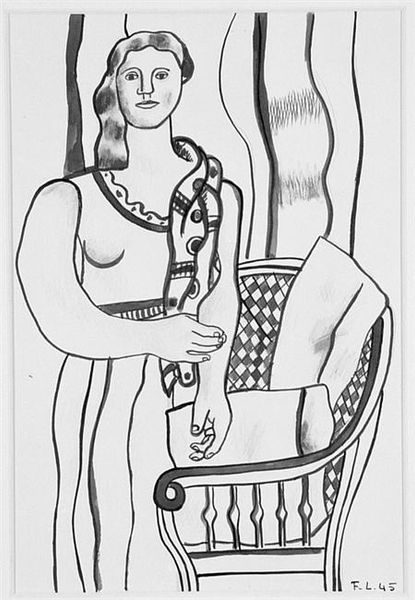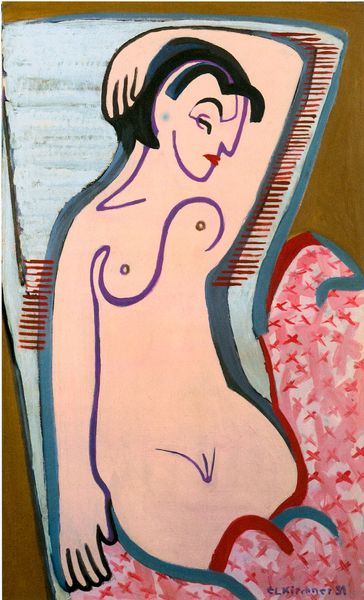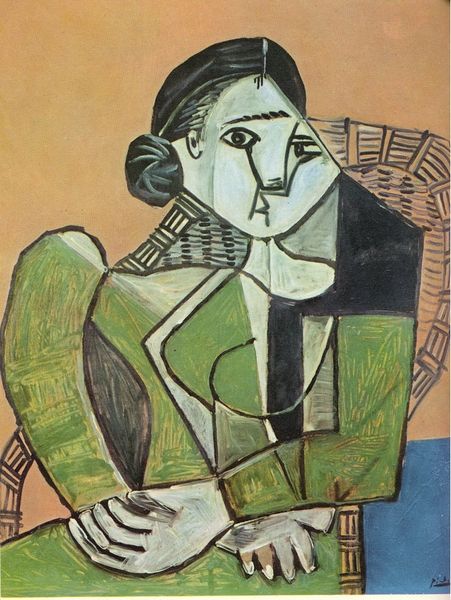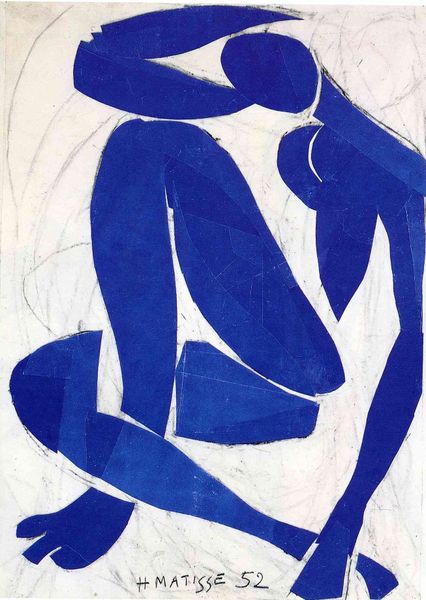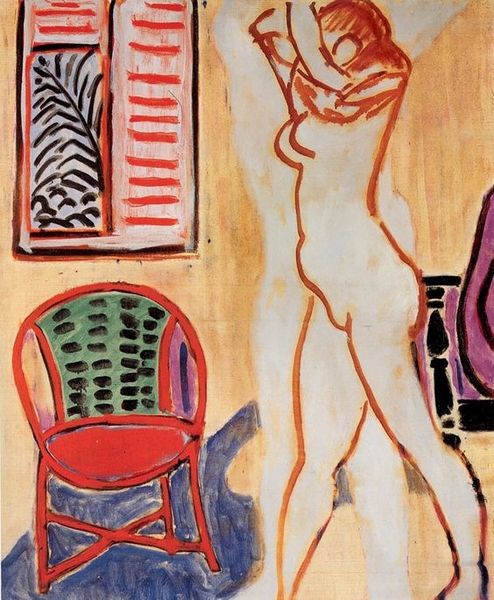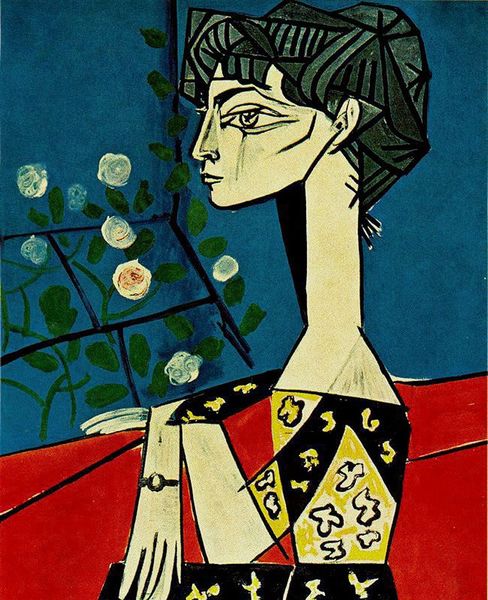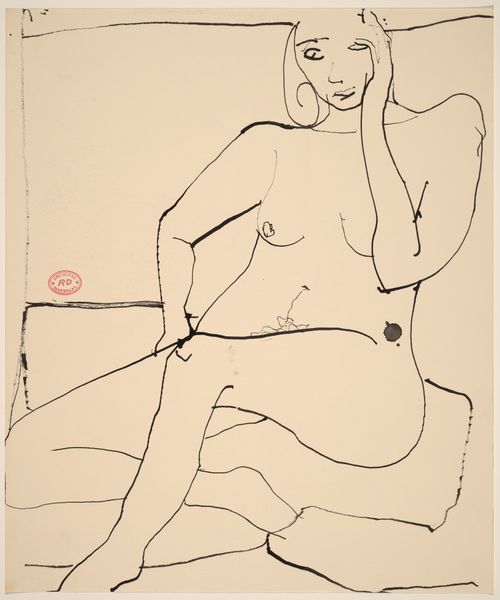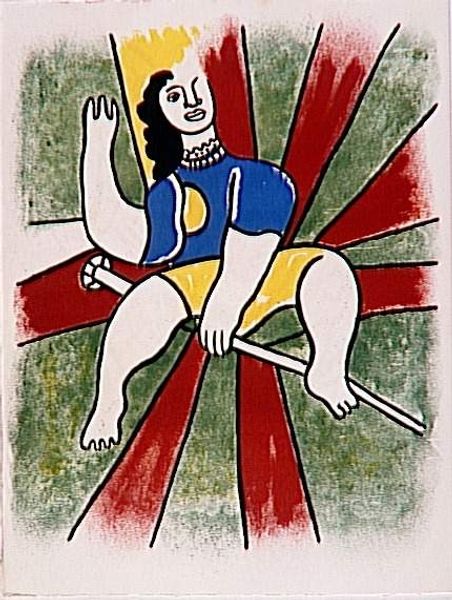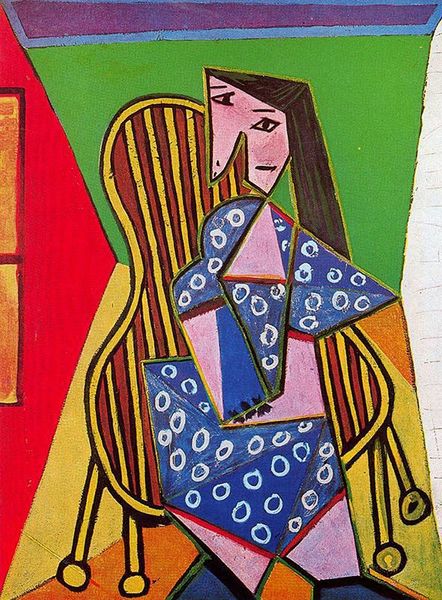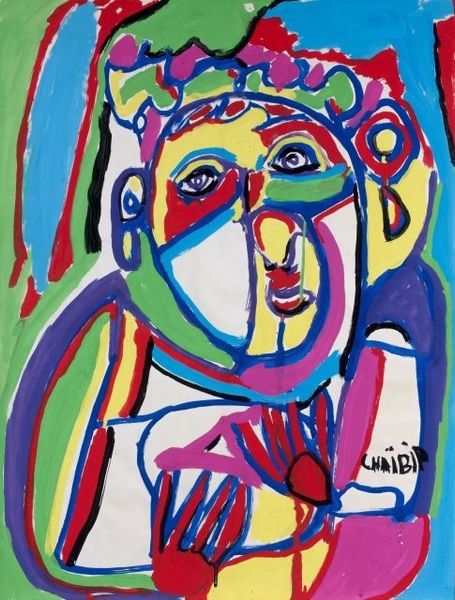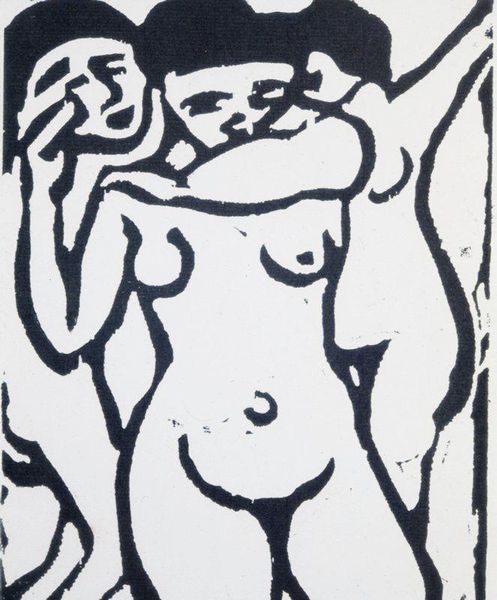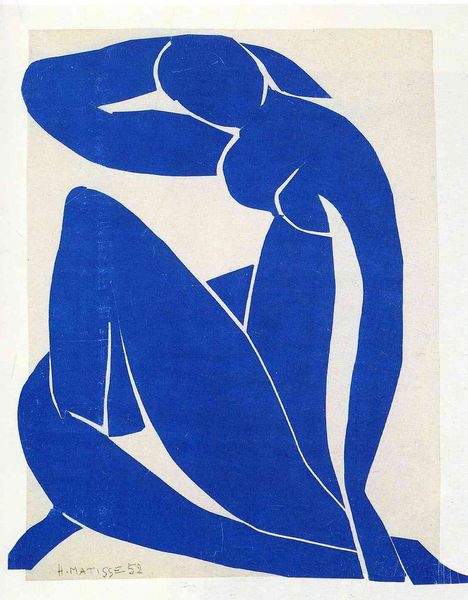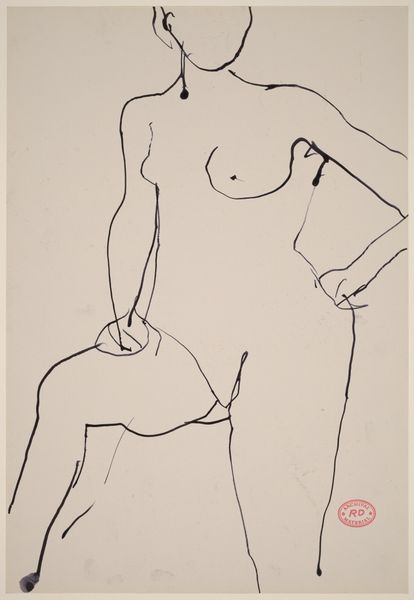
painting, oil-paint
#
portrait
#
cubism
#
painting
#
oil-paint
#
figuration
#
geometric
#
line
#
modernism
Copyright: Fernand Leger,Fair Use
Curator: Welcome. We're standing before Fernand Léger's painting "The album 'Circus'", created in 1950. It's an oil painting and currently resides at the Musée National Fernand Léger in Biot, France. Editor: Right away, I'm struck by the… boldness? It's almost cartoonish, the strong lines and flat blocks of blue and white. It’s happy. Makes me want a polka dot bathing suit, like yesterday! Curator: Léger's work often reflects his engagement with the industrialized world. He was fascinated by machines and modern life. The geometric forms and simplified figures connect him to cubism and the broader modern art movement. Think of it as an attempt to create an accessible visual language for a rapidly changing society. Editor: Absolutely! She looks machine made; a streamlined sort of idealized form, ready for anything. This isn't some fragile pre-war Parisian bohemian; she looks like she builds motorcycles after her shift. It's this blend of organic and mechanical that I find intriguing—it makes her very… real. Curator: Léger's return to figuration after the Second World War suggests a conscious choice. There was a renewed interest in representing human subjects, in ways that were less pessimistic or abstract, reflecting a collective desire to rebuild society. This artwork can be viewed through that lens. Editor: And there is something inherently political to this ‘making accessible’ for society; an ‘art for all’ that I enjoy and connect with. Even though it depicts a performer with their props, its message speaks of a collective human spirit that can persevere through dark days with strength and elegance. Also the strong, block-style reminds me a little bit of… well, the aesthetic reminds me of Soviet Constructivism, like Mayakovsky and Rodchenko's agitprop pieces. It is really the opposite of them, although! Curator: That's a good point, especially concerning the Constructivists' utopian view and aesthetic. What sets Léger apart, however, is his focus on ordinary subjects from everyday life. We should acknowledge, however, that he had indeed joined the Communist party later. This brings more richness to the conversation around his pieces! Editor: Totally! What an awesome thought… Léger, this work; it brings the fun and playfulness, like an acrobat bending reality to create wonder and possibility for everyone to experience it! What a blast! Curator: Agreed. Léger found ways to integrate his aesthetic principles with popular subject matters. "The album 'Circus'" provides some powerful cues to see these approaches, to get in touch with these exciting discourses. Editor: Indeed. After discussing this great work, I see those clues a little better and this lady just grew so much cooler in my book!
Comments
No comments
Be the first to comment and join the conversation on the ultimate creative platform.
